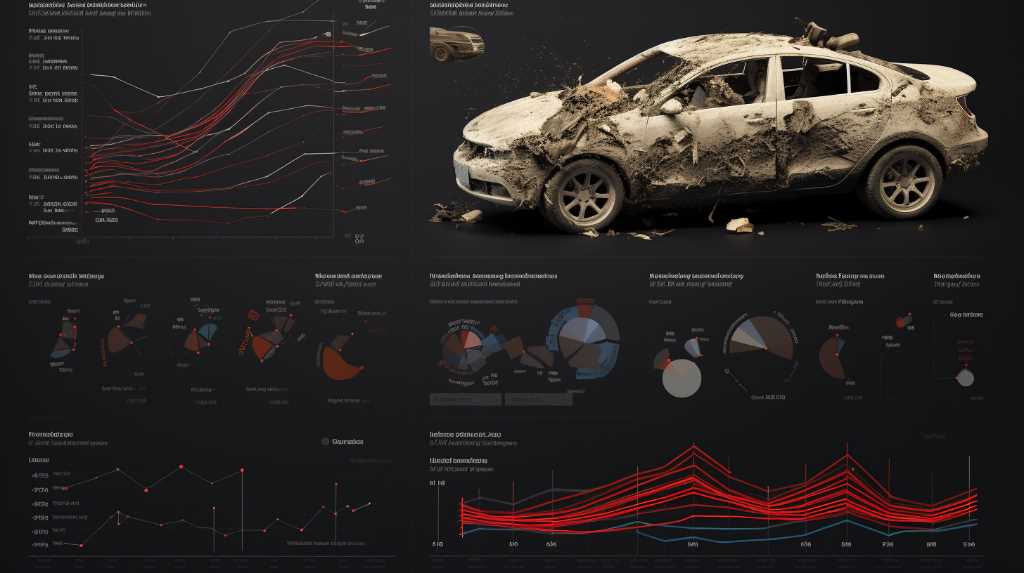
In San Jose, California, looking at car accident data helps us understand how safe the roads are. San Jose is a busy place in Silicon Valley with lots of different people using the streets, like people who live there, people going to work, and tourists. Every year, people review car crashes to see how often they happen and how serious they are. This shows why it’s important to work on making roads safer.
By checking out where the most accidents happen and which roads are dangerous, we can figure out what places need better roads or signs. We also see which groups of people get into accidents the most, which helps us protect them better. Comparing accident data from different years tells us if things are getting better or worse and helps us make good rules or teach people how to be safe on the road.
When safety plans work well, it means fewer accidents and safer travels for everyone in San Jose.
Annual Traffic Collision Overview
In 2022, San Jose saw an increase in car crashes to 5,836, up from the year before. It’s important to look closely at why this is happening, including the patterns and what it means.
A lot of these crashes happened where there’s a lot of traffic, showing that the more cars there are, the more likely a crash will happen.
To make things better, the city’s leaders could do a few things. They could change traffic lights to work better, make sure people follow the rules of the road more, and tell everyone how to stay safe, like not getting distracted while driving and learning safe driving skills.
These steps could help lower the number of crashes and make the roads safer for everyone in San Jose.
High-Risk Intersections and Roads
In San Jose, where there’s a lot of traffic, some crossroads and roads are more dangerous than others. This is why there are more car crashes there.
For example, the crossings at Tully Road and Capitol Expressway, as well as Blossom Hill Road and Snell Avenue, see a lot of accidents.
Busy highways like I-680, I-280, and US-101 also have a lot of crashes, mostly because so many cars use these roads.
These areas need to be watched carefully, and we need to do specific things to make them safer and prevent accidents.
Demographics of Accident Victims
Looking at who gets hurt in car crashes in San Jose helps us see patterns that can guide us to make roads safer. We often find differences in who gets into accidents when we look at their age, gender, and how much money they have.
Young men, especially those from 16 to 25 years old, usually show up more in crash reports. This tells us we might need to focus on teaching young drivers better and being tougher on them about following driving rules.
Also, poorer areas often have more crashes, which means fixing roads and talking to people in those communities could help a lot.
Comparative Analysis by Year
Data from recent years reveal notable trends in car accident rates and outcomes in San Jose. These trends illustrate changes in the frequency and severity of incidents over time. Year-over-year comparisons indicate fluctuations that may be influenced by various factors. These factors include traffic volume, enforcement of driving regulations, infrastructural developments, and technological advancements in vehicle safety.
The analysis must consider the impact of external variables such as economic conditions and weather patterns. These variables can affect driver behavior and accident occurrence. By dissecting the data, stakeholders can identify patterns that could inform preventive measures and policy adjustments. The goal is to enhance road safety and reduce the toll of vehicular accidents in San Jose.
Safety Initiatives and Results
San Jose has been working hard to make its roads safer, and it’s paying off with fewer car crashes. To really understand how well the safety plans are working, we need to look at the numbers from before and after they started.
The Vision Zero plan is a big deal—it’s all about stopping deadly and serious accidents. Thanks to new bike lanes that protect cyclists and crosswalks that are easier for walkers to use, people are safer. The police have also been keeping an eye out for drivers who are drunk or not paying attention, which helps a lot.
The stats show that there are fewer crashes now, which means these safety steps are working. What’s more, by constantly checking the data, the city can fine-tune its approach to tackle any spots where crashes are still high.
Conclusion
Looking at car crash numbers in San Jose, California, shows us that many different things can lead to accidents on the road. Dangerous spots like busy intersections need our attention, and we should focus on helping those who get into accidents the most.
By comparing data from different times, we learn what works and what doesn’t to make roads safer. It’s important to see if the steps we take to improve road safety are working, so we can keep making better plans to lower the chances of crashes in the area.